Team
- Morgan Bremer
- Delaney Martino
Mentor
Greg Gdowski, Martin Gira, and Amy Lerner
Abstract
Left ventricular assist (LVAD) devices are implanted in patients with heart failure to assist with pumping blood through the body. A new minimally invasive procedure has been developed to place these via a lateral thoracotomy approach. For this project we developed a retractor specifically for this surgical procedure.
Biodesign Statement
A tool to prevent the surgical window from closing in obese patients during a lateral thoracotomy for placing a heart pump.
Background
There are ~6.2 million people in the US with heart failure. 125,000-250,000 of these patients are eligible for heart pump (LVAD) placement or heart transplant. Traditionally these devices are placed via a sternotomy, which is an extremely invasive procedure. To provide better patient outcomes, URMC cardiac surgeons are developing a minimally invasive approach to place LVADs efficiently.
The Problem
Since this is a recent innovative procedure, the retractor being used by surgeons is not adequate to provide effective retraction throughout the duration of the procedure. The blades on current retractors are not shaped to be able to engage with the curvature of the ribs at the part of the rib cage that retraction is needed. There is also not an adequate amount of contact between the blades and the ribs. Additionally, these retractors lack orientation variability to be able to be inserted into the wound and be able to interface with the unique anatomy of each patient effectively. All of this causes the retractor to slide out of the surgical site, reducing surgical access and increasing surgical time.
Prototyping Process
Force testing to determine the amount of force surgeons exert on the retractor during a typical surgery.
Blade orientation testing and evaluation to determine the number and placement of blades on the retractor
Blade articulation to determine how to shape the blades and a mechanism of how to move the blades
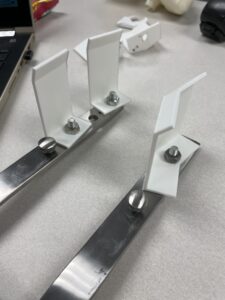
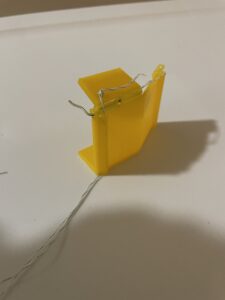
Our Retractor
Novel components:
- Three blade configuration
- Pivoting motion of the blades
- Articulating blades to capture the ribs
- Blades that are anatomically shaped to the ribs
- Articulating arms to follow the curve of the body
- Option for increased expansion
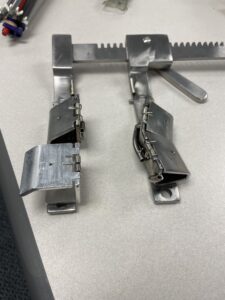
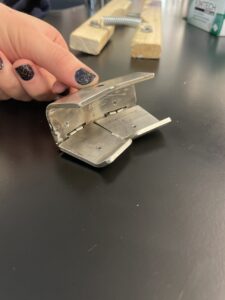
Testing
Force Testing: Testing apparatus and force testing results comparing current lateral retractors to the Apex Access Product
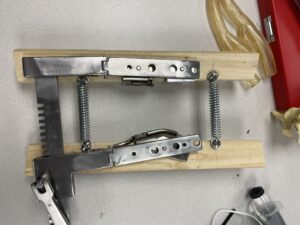
Blade Shape Testing: The testing apparatus on the left was used to test similar lateral thoracotomy retractors to see if the blades would come out when retracting over simulated adipose tissue over ribs. A 3D printed rib model with the material properties of rib and fat tissue was also used to compare the ability of the retractor to not slip out in an anatomically accurate situation. The Apex Access device did not slide out when being used in a model with adipose tissue.
Future Work
Conformable Material:
- Add on surface of the blades for increased contact with the ribs
- Initially anatomically shaped but would conform fully to the unique curvature of the patient’s ribs
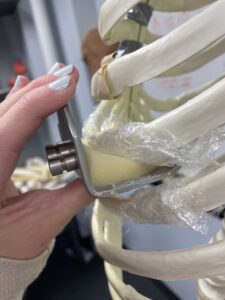
Further Testing:
- Anatomical models with adipose tissue and accurate forces
Blade improvement:
- Evaluate the need of a locking mechanism for the pivoting and articulating parts
- Consider manufacturability and ergonomic factors
Acknowledgments
We would like to thank our professors Greg Gdowski, Martin Gira, and Amy Lerner for their input and support on our project. We also want to thank Mahllet Beyene for ensuring everything was scheduled and ordered on time and William Mildenberger for fabricating our retractor. Lastly, we want to thank Dr. Jonathan Stone, Dr. Igor Gosev, and Dr. Katherine Wood for their clinical expertise and the opportunity to experience surgical procedures.
The Team
Morgan Bremer: LinkedIn Email: mbremer@ur.rochester.edu
Delaney Martino: LinkedIn Email: dmartino@ur.rochester.edu
